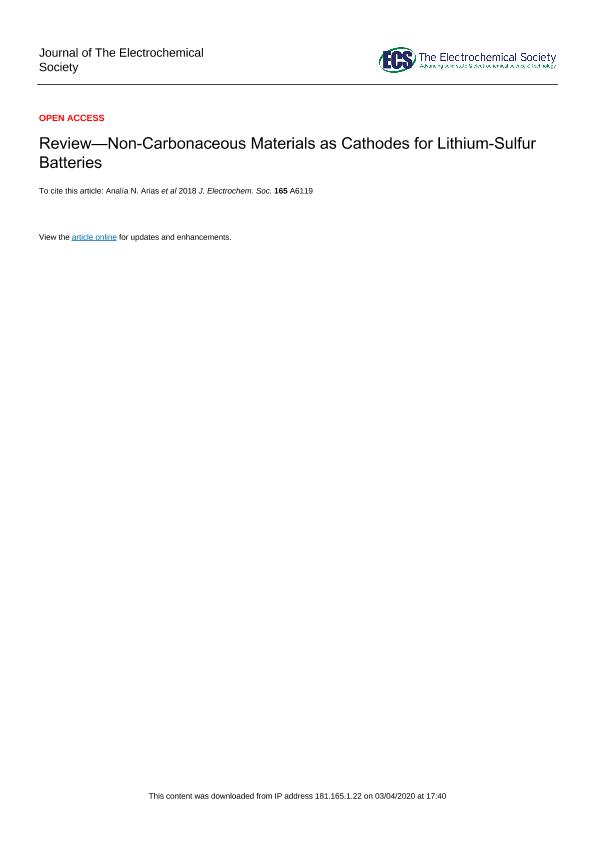Artículo
Review- Non-Carbonaceous Materials as Cathodes for Lithium-Sulfur Batteries
Fecha de publicación:
01/2018
Editorial:
Electrochemical Society
Revista:
Journal of the Electrochemical Society
ISSN:
0013-4651
Idioma:
Inglés
Tipo de recurso:
Artículo publicado
Clasificación temática:
Resumen
Lithium-sulfur batteries are presented as a promising alternative for the operation of those devices, including electric vehicles,that require higher specific capacity than current lithium-ion technology. Unfortunately, lithium-sulfur batteries suffer from severallimitations that still produce a relatively fast capacity fading and poor utilization of active materials.In order to alleviate the disadvantages that arise at the cathode, several researchers have searched for new electrode materials. Becauseof the long standing tradition in the use of carbons in energy storage systems, carbonaceous cathodes have been the most popularchoice. Recently, however, there has been a trend for the study of non-carbonaceous materials as cathodes in lithium-sulfur systems.Materials such as polymers, metal oxides, metal carbides, amongst many others were reported, showing excellent properties whichmake them compete side by side with state of the art carbonaceous cathodes. Thesematerials have generally improved the conductivityof the conventional sulfur electrode, and have provided a 3D soft adsorbent porous structure, which efficiently traps polysulfides.These characteristics are reflected in an improved electrochemical performance, reaching, in some cases, capacity retention valuesclose to 1000 mA h g−1 after 100 cycles at high discharge rate. Here, we propose a review of these non-carbonaceous cathodes.
Palabras clave:
BATTERIES
,
LITHIUM
,
SULFUR
,
CATHODES
Archivos asociados
Licencia
Identificadores
Colecciones
Articulos(CCT - SALTA-JUJUY)
Articulos de CTRO.CIENTIFICO TECNOL.CONICET - SALTA-JUJUY
Articulos de CTRO.CIENTIFICO TECNOL.CONICET - SALTA-JUJUY
Citación
Arias, Analía Natalí; Tesio, Alvaro Yamil; Flexer, Victoria; Review- Non-Carbonaceous Materials as Cathodes for Lithium-Sulfur Batteries; Electrochemical Society; Journal of the Electrochemical Society; 165; 1-2018; 1-18
Compartir
Altmétricas




